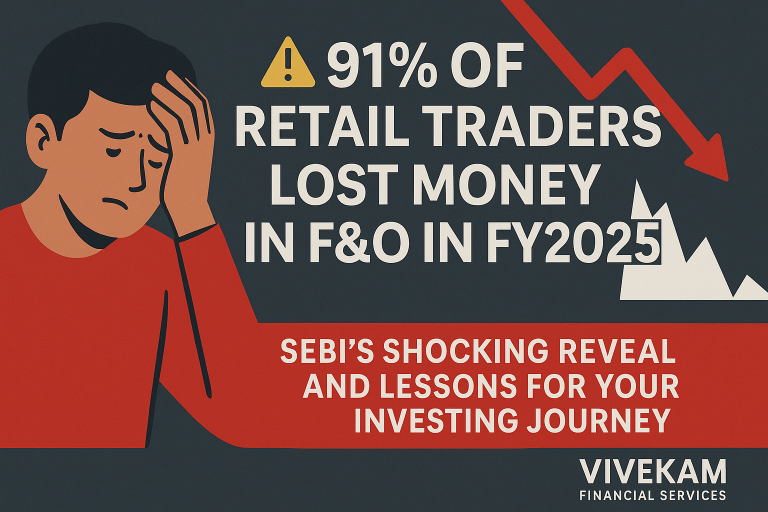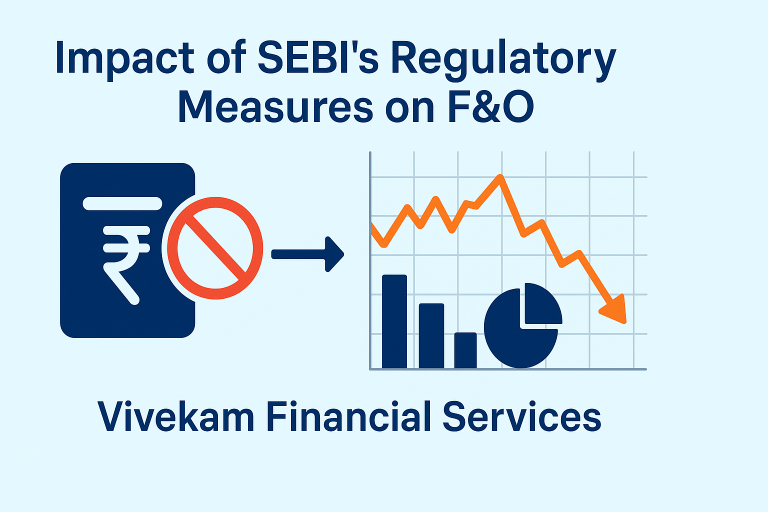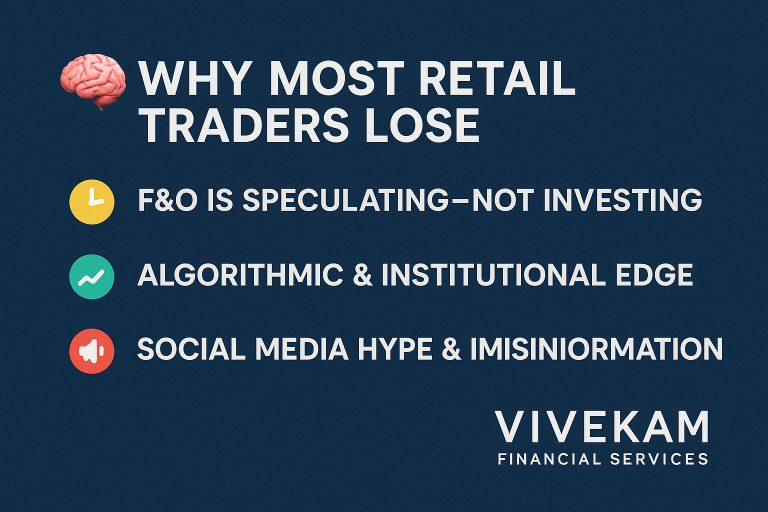91% of Retail Traders Lost Money in F&O in FY2025

A Stark Reality Check on Equity Derivatives in India
Let’s not sugarcoat it: Retail F&O trading is bleeding Indian households dry. SEBI’s FY 2025 report drops a truth bomb most don’t want to hear—91% of retail F&O traders are losing money. That’s not a statistic, it’s a financial massacre.
₹1.06 trillion in collective losses—despite all the flashy trading apps, influencer seminars, and ‘option buying strategies’ peddled online. SEBI threw in the towel with reforms, and still, the gamblers came back for more.
 Impact of SEBI’s Regulatory Measures: Limited Success
Impact of SEBI’s Regulatory Measures: Limited Success

SEBI tried everything short of banning retail trading outright:
- Reduced expiry days.
- Increased lot sizes.
- More risk disclaimers than a horror movie.
Result? Minimal change. Like putting a Band-Aid on a shark bite. F&O volume dipped slightly, but activity is still up 36% over 2 years. SEBI basically told people to calm down—and they just shouted louder.
Why Most Retail Traders Lose: Key Factors

1. F&O = Speculation, Not Investment
F&O isn’t smart investing—it’s financial roulette. Without training or tools, most retail traders are bringing a spoon to a gunfight.
2. Playing Against Institutional Powerhouses
You’re not trading against other noobs. You’re facing Wall Street’s ninjas—HFT firms, algos, and prop desks who see your trades before you do. They’re playing chess; you’re throwing darts.
3. Hype, Not Humility
Social media is the new Vegas—everyone’s flexing profits and hiding losses. Most “option traders” on Instagram couldn’t explain implied volatility if their life depended on it.
4. Frequent Trading Adds Up
Every click is cash—for the broker, not for you. Commissions, STT, slippage… death by a thousand cuts. Some traders lost more to costs than the market itself.
Retail Demographics & Profit Patterns
Here’s the profile: young, male, under 40, overconfident, underprepared. It’s a testosterone-fueled trading frenzy where FOMO replaces fundamentals.
- 84% male.
- 75% under 40.
- Most blew up their capital.
- The lucky few in profit? They’re the whales, not your Telegram buddy who made ₹12k on BankNifty calls once.
And those aged <20 who averaged profits? Don’t clap yet—they also posted wild losses. This isn’t genius, it’s variance on steroids.
Smarter Strategies: What You Can Learn
1. Educate Before You Trade
If you don’t know the difference between Theta and Gamma, you’re not trading—you’re donating.
2. Ignore the Hype
That options strategy from an “finfluencer” on YouTube? It worked once. For them. Not for you. They’re getting paid via views, not trades.
3. Play Within Your Means
If you’re using borrowed capital or margin money in options, you’re a blow-up waiting to happen. It’s not brave—it’s reckless.
4. Prefer Long-Term Equity Investing
It’s slow, yes. But guess what? So is compound interest. And that’s what builds wealth—not intraday thrills.
5. Know the Institutional Edge
These firms have PhDs, servers next to the exchange, and risk engines. You have Zerodha and vibes.
What SEBI Is Doing Now & What It Means
SEBI is now cracking down on even the big boys—like Jane Street—because the market manipulation is getting out of hand. If the regulators are saying, “Whoa, this is insane,” then retail should be sprinting for the exits, not doubling down.
Extending expiries, banning HFT tactics, freezing gains—SEBI isn’t just worried about retail; they’re worried about the entire ecosystem imploding from speculative rot.
Frequently Asked Questions
Q1: What exactly is the “Equity Derivatives Segment”?
It’s where most retail money goes to die.
Q2: Why did SEBI increase minimum lot sizes?
Because too many people were YOLO-ing on ₹500 trades and blowing up.
Q3: How were small investors most affected?
They bore the brunt of slippage, STT, brokerage, and mental burnout.
Q4: Are there any retail traders who made money?
Yes—but almost all are outliers or former institutional quants.
Q5: Will SEBI’s measures reduce retail losses going forward?
Only if retail listens. Which, judging by the stats, is unlikely.
Q6: What’s a safer alternative to F&O for retail?
Index funds, SIPs, blue-chips—basically everything except this casino.
Conclusion: Time for a Paradigm Shift
F&O for retail traders is a disaster—SEBI’s report is the post-mortem. And yet, many still treat it like a side hustle. It’s not. It’s a minefield.
If you’re reading this, consider it your warning label. You wouldn’t drive without a seatbelt—so don’t trade without a brain. And for most, that means don’t trade F&O at all.







